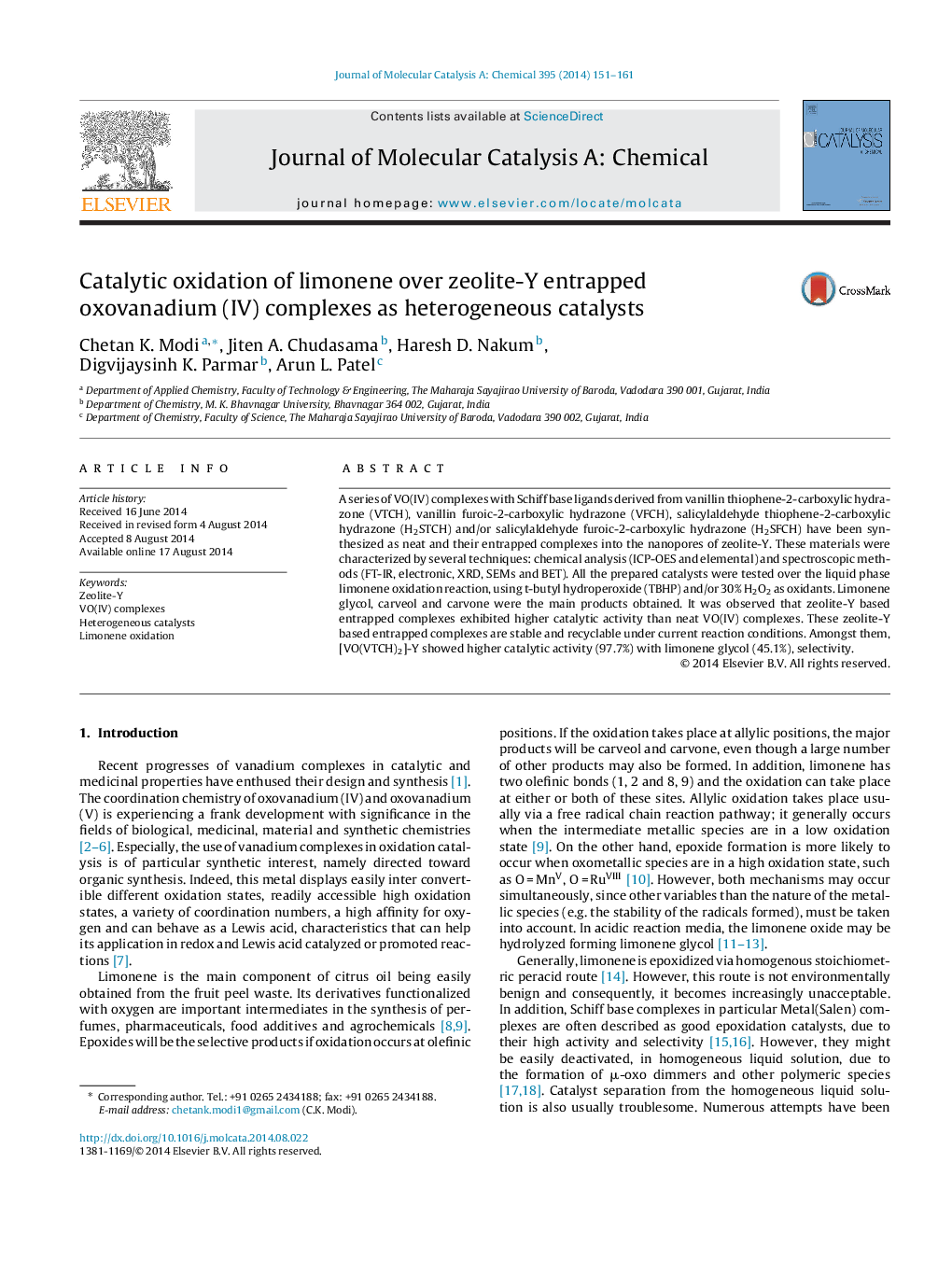| Article ID | Journal | Published Year | Pages | File Type |
|---|---|---|---|---|
| 65308 | Journal of Molecular Catalysis A: Chemical | 2014 | 11 Pages |
•The use of zeolite-Y entrapped VO(IV) complexes as heterogeneous catalysts.•The catalysts were prepared by flexible ligand (FL) technique.•Oxidation of limonene using t-butyl hydroperoxide and/or 30% H2O2 as oxidants.•[VO(VTCH)2]-Y showed higher catalytic activity (97.7%) with limonene glycol (45.1%), selectivity.•The proposed catalytic mechanism explains two possible pathways for limonene oxidation
A series of VO(IV) complexes with Schiff base ligands derived from vanillin thiophene-2-carboxylic hydrazone (VTCH), vanillin furoic-2-carboxylic hydrazone (VFCH), salicylaldehyde thiophene-2-carboxylic hydrazone (H2STCH) and/or salicylaldehyde furoic-2-carboxylic hydrazone (H2SFCH) have been synthesized as neat and their entrapped complexes into the nanopores of zeolite-Y. These materials were characterized by several techniques: chemical analysis (ICP-OES and elemental) and spectroscopic methods (FT-IR, electronic, XRD, SEMs and BET). All the prepared catalysts were tested over the liquid phase limonene oxidation reaction, using t-butyl hydroperoxide (TBHP) and/or 30% H2O2 as oxidants. Limonene glycol, carveol and carvone were the main products obtained. It was observed that zeolite-Y based entrapped complexes exhibited higher catalytic activity than neat VO(IV) complexes. These zeolite-Y based entrapped complexes are stable and recyclable under current reaction conditions. Amongst them, [VO(VTCH)2]-Y showed higher catalytic activity (97.7%) with limonene glycol (45.1%), selectivity.
Graphical abstractFigure optionsDownload full-size imageDownload high-quality image (203 K)Download as PowerPoint slide
